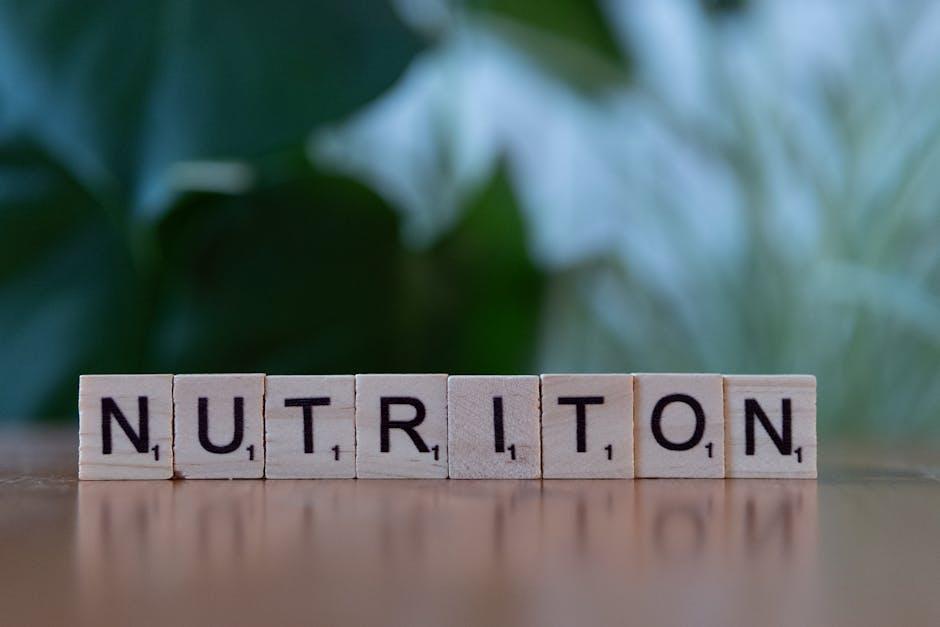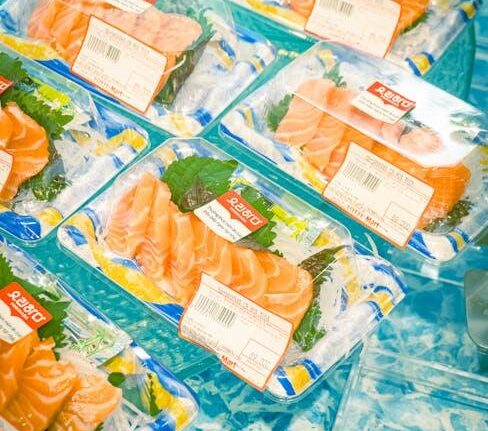In a world swirling with colorful packages and catchy slogans, the humble food label often remains overlooked—a small panel packed with vital clues about what’s really inside your groceries. Yet, beneath the fine print lies a treasure trove of information that can guide you toward healthier choices, help manage allergies, or simply satisfy your curiosity. Learning to read food labels is like acquiring a secret code, one that empowers you to navigate the supermarket aisles with confidence and care. This article will uncover the essentials of food labels: what to look for, how to interpret the numbers, and why understanding these details matters more than ever in today’s food landscape.
Table of Contents
- Understanding Serving Sizes and Portions for Accurate Nutritional Awareness
- Decoding Ingredients Lists to Identify Hidden Additives and Allergens
- Interpreting Nutritional Facts Panels for Balanced Dietary Choices
- Spotting Healthy Fats, Sugars, and Sodium Levels in Everyday Foods
- Recognizing Certification Labels and Health Claims with Critical Insight
- Q&A
- Final Thoughts

Understanding Serving Sizes and Portions for Accurate Nutritional Awareness
Understanding the difference between serving sizes and portions is essential for maintaining accurate nutritional awareness. The serving size listed on food labels reflects a standardized amount set by regulatory agencies, designed to help consumers compare similar products easily. However, the portion you actually consume might differ significantly from this recommended size, which means your calorie and nutrient intake could be higher or lower than the label suggests. Being mindful of this distinction empowers you to make informed decisions about your eating habits.
Here are key points to keep in mind when evaluating servings and portions:
- Serving Size: The fixed amount that the nutrition facts are based on, often in grams or common household measures.
- Portion: The actual amount you choose to eat, which might be more or less than the serving size.
- Adjustment: Always multiply the nutrient values by the number of portions consumed to get an accurate estimate.
| Food Item | Serving Size | Typical Portion | Calories Per Serving |
|---|---|---|---|
| Granola Bar | 1 bar (40g) | 2 bars | 150 |
| Yogurt | 150g | 1 cup (200g) | 100 |
| Orange Juice | 1 cup (240ml) | 1.5 cups | 110 |

Decoding Ingredients Lists to Identify Hidden Additives and Allergens
When scanning ingredient lists, it’s essential to look beyond the familiar terms. Many additives lurk behind scientific names or E-numbers that might sound harmless but could trigger allergies or adverse reactions. For example, monosodium glutamate (MSG) is often disguised as “flavor enhancer 621,” while sulfites might appear under various preservatives like “potassium metabisulfite.” Keeping a handy list of common hidden additives can empower you to make safer choices and avoid undesirable health effects.
To help decipher ingredient labels, here are some common hidden additives and allergens often tucked away:
- Hidden Sugars: Such as dextrose, maltose, high-fructose corn syrup
- Artificial Colors: Like Red 40, Yellow 5, and Blue 1
- Preservatives: Including BHA, BHT, and sodium benzoate
- Common Allergens: Such as casein (milk), gluten (wheat), and soy lecithin
| Additive | Hidden Name(s) | Potential Concern |
|---|---|---|
| MSG | Flavor Enhancer 621 | Allergic reactions, headaches |
| Sulfites | Potassium Metabisulfite | Asthma trigger |
| Gluten | Wheat Protein, Malt | Celiac disease, sensitivity |

Interpreting Nutritional Facts Panels for Balanced Dietary Choices
Decoding the numbers on a nutritional facts panel can be a game changer for your health goals. Instead of being overwhelmed, focus on key components that influence your daily nutrition. For starters, pay close attention to serving sizes — this is the foundation for understanding all the other values correctly. Next, scan the amounts of total fat, sodium, sugars, and fiber. These figures provide insight into how the food will affect your energy levels, heart health, and metabolic balance. Remember, not all fats are created equal, so watching saturated fats and trans fats specifically can help you make smarter choices.
The % Daily Value (%DV) column is your shorthand guide to judging a product’s nutritional impact without crunching numbers yourself. Here’s a quick rule of thumb to keep in mind:
- 5% DV or less means the food is low in that nutrient — ideal for salt, saturated fat, and added sugars.
- 20% DV or more indicates a high amount — great for fiber, vitamins, and minerals you want more of in your diet.
To visualize this concept, here’s a simplified snapshot:
| Nutrient | Amount per Serving | % Daily Value | Tip |
|---|---|---|---|
| Sodium | 140 mg | 6% | Keep low for better blood pressure |
| Fiber | 4 g | 16% | Good amount for digestion |
| Added Sugars | 10 g | 20% | Limit to avoid spikes in blood sugar |
| Vitamin C | 30 mg | 33% | Supports immune health |

Spotting Healthy Fats, Sugars, and Sodium Levels in Everyday Foods
When navigating the aisles, identifying healthy fats is key to making smarter choices. Look for sources rich in monounsaturated and polyunsaturated fats, like olive oil, avocados, and nuts, which support heart health and reduce bad cholesterol. Avoid trans fats and limit saturated fats by reading labels carefully; these often lurk under vague terms like “partially hydrogenated oils.” Remember, total fat content alone doesn’t tell the whole story—it’s the type of fat that matters most for your well-being.
Understanding sugars and sodium levels can transform your diet. Check the ingredients list for hidden sugars disguised as fructose, corn syrup, or dextrose, which can spike blood sugar unexpectedly. Some products labeled “low fat” may compensate by adding extra sugars—always assess both to keep balanced. As for sodium, frequent consumption of high-salt foods can elevate blood pressure, so aim for products with less than 140 mg sodium per serving (considered low). Here’s a quick guide to interpret the numbers effectively:
| Component | Healthy Range | Watch For |
|---|---|---|
| Fats | 10-20 g total, mostly unsaturated | Trans fats, high saturated fat |
| Sugars | Less than 10 g per serving | Added sugars, syrups |
| Sodium | Below 140 mg per serving | High salt, multiple sodium sources |

Recognizing Certification Labels and Health Claims with Critical Insight
When navigating the world of food packaging, certification labels and health claims can often seem like a maze. It’s essential to approach these symbols with a discerning eye, understanding that not all labels carry the same weight. Certifications such as Organic, Fair Trade, or Non-GMO Project Verified typically require rigorous standards, but the exact meaning can vary by certifying body. Health claims like “low fat” or “supports immune health” might sound promising, yet they don’t guarantee a product’s overall nutritional value. By learning to decode these labels, you equip yourself to make smarter, more informed choices that truly benefit your wellbeing.
Before accepting a certification or health claim at face value, consider these tips:
- Verify the Certification Source: Trusted organizations have transparent guidelines and verification processes.
- Look Beyond Buzzwords: Words like “natural” or “wholesome” aren’t regulated and can be misleading.
- Check the Nutrition Facts Panel: A product with a healthy label can still be high in sugar or sodium.
- Understand the Fine Print: Claims often come with disclaimers or qualifications that may change their meaning.
| Label/Claim | What It Means | What to Watch For |
|---|---|---|
| USDA Organic | Meets strict organic farming standards | Only on certified products |
| Gluten-Free | Less than 20 ppm gluten | Cross-contamination risks |
| Low Fat | 3 grams or less per serving | May have added sugars |
| Non-GMO | Free from genetically modified organisms | Voluntary verification |
Q&A
Q&A: Reading Food Labels – What to Look For
Q1: Why is reading food labels important?
A1: Food labels are like a map to your meal’s nutritional journey. They help you understand what’s inside your food, making it easier to make informed choices about health, allergies, and dietary preferences.
Q2: What’s the first thing I should look for on a food label?
A2: Start with the serving size. It sets the stage for all the numbers that follow. Everything—from calories to nutrients—is based on this amount, so knowing your portion matters.
Q3: How can I spot hidden sugars on the label?
A3: Check the ingredient list for sneaky names like corn syrup, dextrose, maltose, and anything ending in “-ose.” These are all forms of sugar that may not be obvious at first glance.
Q4: What’s the difference between “total fat” and “saturated fat”?
A4: Total fat is the sum of all fats in the product, while saturated fat is a specific type that, when consumed in excess, can impact heart health. Aim to keep saturated fat low and choose foods rich in unsaturated fats.
Q5: Should I pay more attention to calories or nutrients?
A5: Both deserve a glance, but nutrients tell a fuller story. Calories show energy content, but nutrients like fiber, vitamins, and minerals reveal the food’s value to your body.
Q6: How can I tell if a product is high in sodium?
A6: Look at the sodium content per serving. Foods with more than 400 mg per serving are considered high in sodium. Keep an eye on this, especially if you’re managing blood pressure.
Q7: What about fiber – why does it matter?
A7: Fiber aids digestion, helps you feel full, and supports heart health. A good rule of thumb is to choose foods with at least 3 grams of fiber per serving.
Q8: Are “natural” or “organic” labels reliable?
A8: These terms come with regulations but don’t always guarantee a healthier product. It’s best to look beyond marketing buzzwords and focus on the actual nutrition facts.
Q9: How do I interpret the % Daily Value (%DV)?
A9: %DV shows how much a nutrient in one serving contributes to your daily diet, based on a 2,000-calorie day. Aim for 5% DV or less for nutrients you want to limit (like saturated fat), and 20% DV or more for beneficial nutrients (like fiber).
Q10: Any tips for quickly scanning food labels?
A10: Yes! Focus on serving size, calories, saturated fat, sodium, sugars, and fiber. Compare similar products, and don’t be fooled by health claims without checking the numbers.
Reading food labels doesn’t have to be a chore—it’s empowerment in disguise. With a little practice, you’ll navigate the supermarket like a label-savvy pro!
Final Thoughts
In the intricate world of grocery aisles, food labels serve as your compass—guiding you through a maze of ingredients, nutrients, and nutritional claims. By learning what to look for and how to interpret these little packages of information, you empower yourself to make choices that align with your health goals and values. Next time you reach for that snack or meal, remember: every label is a story waiting to be read, and with a discerning eye, you can unlock the secrets to smarter, more mindful eating. So, take a moment, turn the package around, and let the label lead the way.













Leave feedback about this